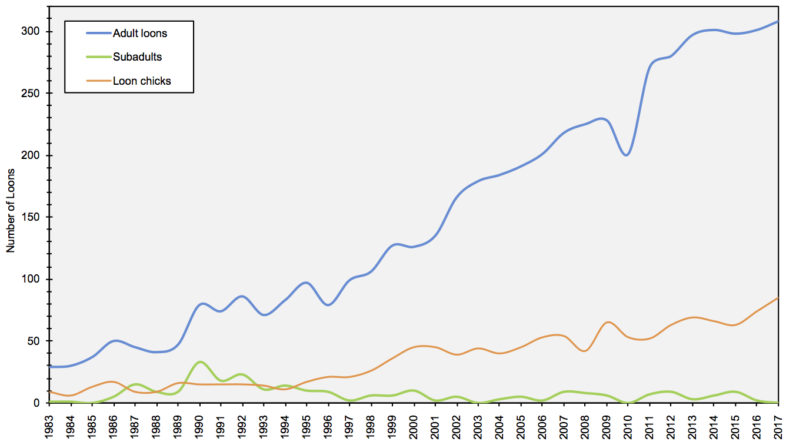Join the 36th Annual Vermont LoonWatch on July 21

Survey a lake for one hour on the third Saturday of July each year. If you’ve got time, survey a few lakes. On this single day, we cover more than 130 lakes and ponds statewide each year. It’s the single most effective way for VCE to document and track breeding loons across the state. To get an assignment for the annual LoonWatch, contact our loon biologist, Eric Hanson. Eric keeps a list of lakes where we need volunteers.
Young Loons on a Lake Near You!
Male and female Common Loons both tend to their young, feeding insects and minnows at first and larger fish later. Although loons will eat almost any fish they catch, perch are a favorite food. A loon’s average dive length is 35-40 seconds. Most fish are swallowed underwater with only the occasional larger fish brought to the surface. In a loon’s gizzard, which contains small stones, powerful enzymes and stomach acids help to digest the fish – bones included.
Adults guard their chicks during this period. Males might “yodel” at intruder loons or boaters who come too close. If intruder loons are present, chicks are often hidden near shore. The parents will also move the family to areas with less wind and wave action.
Common Loons will also eat live bait and lures from anglers. We routinely encounter loons tangled in fishing line, and loons that have ingested fishing line and bait. The results can often be fatal. Please “reel in” when loons are diving nearby and avoid using lead fishing gear of any kind.
Results from the Annual Vermont LoonWatch
Here’s a map of the latest Common Loon sightings in Vermont from Vermont eBird, a project of the Vermont Atlas of Life. If you see loons, please report them to Vermont eBird and help us track their populations.

